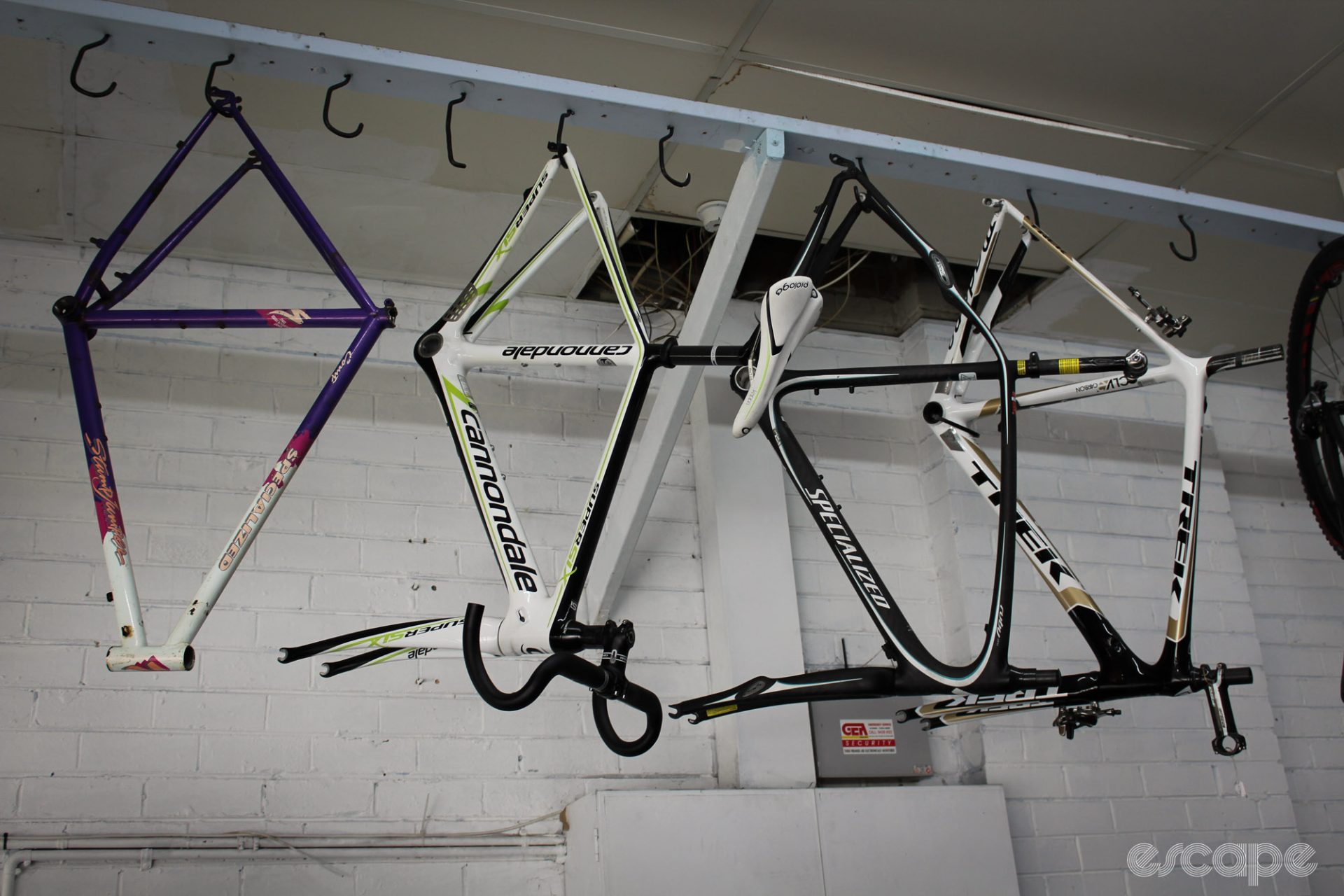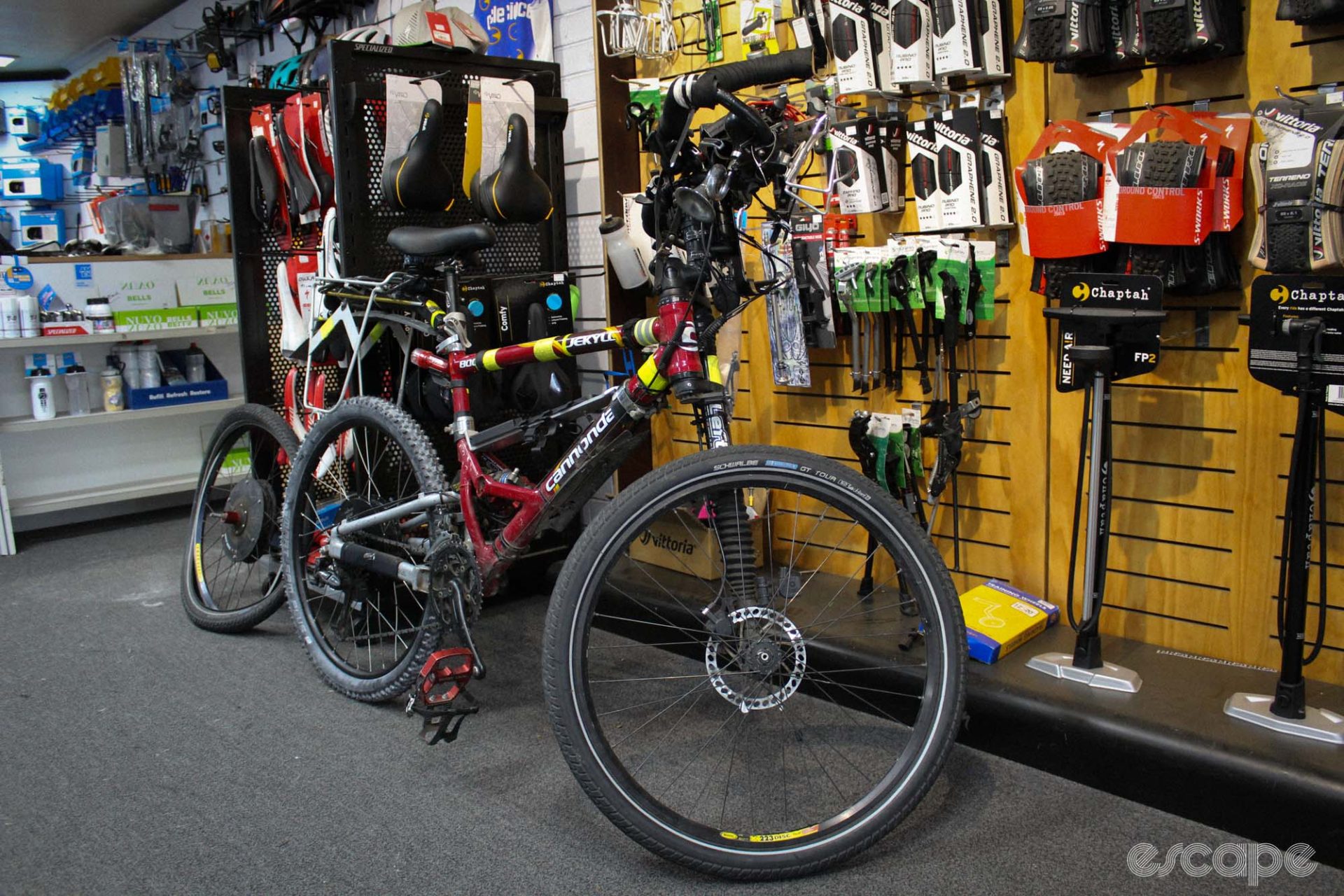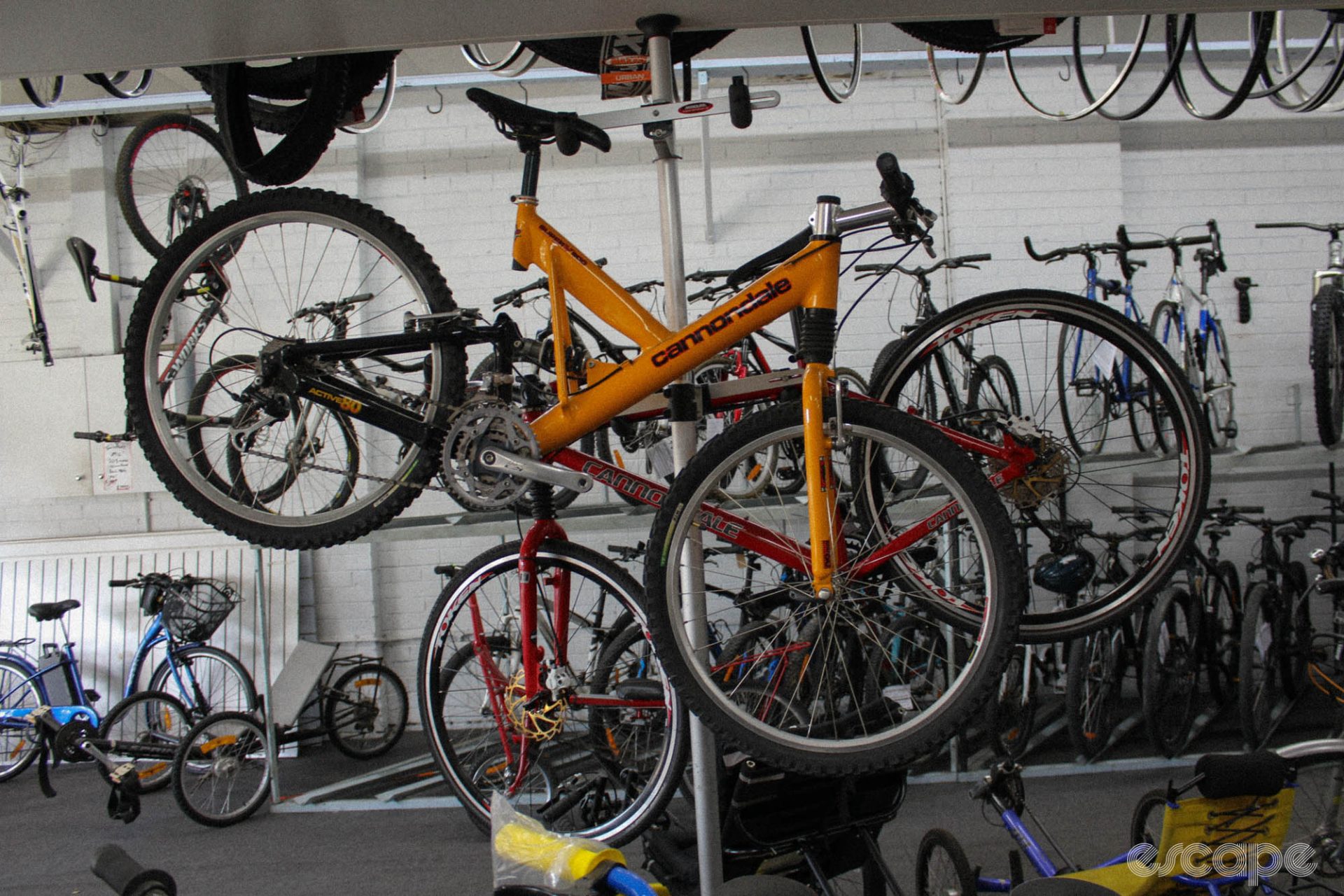A couple of days ago, as I pulled the family cargo trike out of the garage for the school run, a brake cable snapped. Mechanical issues happen from time to time, but this one was a fairly significant setback: the cable snapped at the brake lever leaving a frayed thicket of wire running into an internal cavity filled with other cables, from which – somehow, somewhere – two cables emerged from the base of the steerer tube. They ran on in gentle arcs under the bucket, ending their journey at the mechanical disc brakes on either side.
Without two-thirds of possible brakes, stopping doesn’t really happen on our cargo trike – the back roller brake is mostly a suggestion. Add a load of two kids, and there was scope for all sorts of chaotic momentum to be gained on downhills, which we have a lot of around here. Seeing as the cargo trike is basically our car for short runarounds, it needed fixing – and in a hurry.
That night, I disconnected brake cables and fished out the cable splitter, a black metal bullet of a thing which I’d never seen before. One cable went in; two cables went out. But the secrets the splitter held were elusive – there was no way I could see to open the little cylinder to install a new brake cable, and after an increasingly sweary and then tipsy few hours in the garage heating it up, spraying it with WD40, and trying to get a grip on it, I was forced to concede defeat.
The next day, I rode gingerly down to my local bike shop, dragging the rear brake most of the way. There are a few bike shops nearby, many of which I’ve had good experiences with, but for curly and niche problems – the not-at-all-infuriating spot most of my mechanical issues seem to exist – it’s Cycle Science I go to.
Perhaps you know a shop like it. It’s not a glistening store owned by a big brand, with everything perfectly merchandised. There’s no polished concrete and expensive superbikes. What there is: a cabinet on the side with old parts, a decade or more in age. The smell of rubber and aerosol sprays hanging faintly in the air. Dangling from hooks in the ceiling are an assortment of frames from through the years – an old steel Specialized mountain bike frame, an old Cannondale or two. There are tyres up there too, hanging like salami curing in a butcher’s.


The shop mostly focuses on repairs these days, but there are bikes scattered around the salesfloor: recumbents, Bike Fridays, cargo bikes, kids’ bikes. Usually, the owner’s dog wanders around. It hasn’t changed much since I first started going there more than 20 years ago, and I appreciate it for what it is. It’s not pretty or slick, but it’s comfortable and familiar.
I walk in and get chatting to the mechanic, a friendly young guy called Tom. The way that the best mechanics are, he loves bikes: before we get to the impossible problem of the cargo trike with the broken brake he shows me an old Cannondale Silk Tour he’s just built up as his commuter/gravel bike, the same colour and vintage as an old Cannondale hardtail I did the same thing with half a decade ago. It’s the coolest bike I’ve seen in a while, with the kind of grab-bag of interesting parts that reveals more and more the longer you look at it.

We walk out to the cargo trike on the footpath outside. He gets further than I do by getting the cable splitter open with a pair of vise grips, but then we’re both stumped, because what’s inside is like nothing we’ve ever seen. There’s not three separate cables: there is one that goes into a metal lug, and then – all still one item – it forks off into two. He calls his boss, the store owner, who’s on holidays. He’s stumped too, which is saying something because he works with very specifically weird bikes most of the time.
The prognosis is not looking good. I call a cargo bike specialist store in the city that stocks the same Danish brand to find out if it’s a proprietary part. Tom calls a mate that works at another bike shop dealing in machines at the odder end of the spectrum. With our powers combined, we establish that this brake cable is extraordinarily niche, nobody has ever seen one like it, and nobody has one like it on hand. If we can figure out where to get one from it’ll take a while, which won’t do, because this is a bike we use most days. Cogs whir. “This is an interesting problem,” Tom says with a smile.

A thought: can we bypass the cable splitter entirely? Maybe. Is there a different brake lever that pulls two cables? There is. Does it have a parking brake? It does. Do you have one? He’ll have a look.
Out the back of the shop are boxes of parts – some new, but a lot of them in boxes of weird or old gear that have come off repairs over many, many years. At the bottom of one such dusty box is, miraculously, this extremely specific and niche brake lever. The shop has been holding onto it for recumbent riders with mobility issues on one side, who need a way of controlling two brakes with one hand. I love something about that mentality of ‘you never know when it’ll come in handy’.
We awkwardly wrestle the cargo trike in through the door, tilting it and taking parts off until it fits through the opening. Tom’s energised by something fun to tinker on, and goes to make a coffee before getting stuck in. I walk home, half-apologetic for upending his day by lobbing such an abundantly difficult dilemma onto his plate.

A few hours later, I get a call. The cargo trike’s fixed. Through some needle of good fortune in a haystack of technical gremlins, my local bike shop has turned out to be a triple threat: it had an obscure part to get a cargo trike running again, a mechanic with the ingenuity and enthusiasm to figure out how to improvise a solution, and an open and inclusive approach to the kind of bikes they sell and work on.
The rise of online commerce hasn’t always been kind to the local bike shop, smoothing their edges and pushing shops in two directions. One: that leans more into their strengths, whether that’s mechanical work or niches. The other: cleanliness, consistency, focus-grouped homogeny. Both have their place, and both employ good people.
I recently picked up a Specialized for my daughter from a local retailer, and was helped by genuinely engaged staff who were as keen for the bike to work for her as I was. Sometimes I shop at the local Trek store, and receive friendly service and know exactly what I’m going to get. Sometimes I go to other chains, and have access there to a big range of product, backed by websites that I can use to confirm if they have what I need before I make the journey. There are good experiences and there are bad experiences in bicycle retail, but I choose to believe the good outweighs the bad.

Sometimes, though, you just have a problem on your hands and need help on some technical and challenging problem that has you – a person who knows a bit about bikes – completely baffled. At times like this, when you need a weird bike back on the road and have wildly optimistic timelines to do so, the old school bike shop is often a saviour. A bit dusty, a little crusty, but trusty.
As I often am when I’m picking up a bike from these guys, I was pathetically grateful that they’d managed to fix it. The bill: a recycled brake lever from a crate of obscure treasures, new brake cables and outers, and a reasonable cost for it all – within the same day, without any attitude. As I thanked Tom again, he waved the praise away with a smile: “that’s what we’re here for.”
Did we do a good job with this story?




